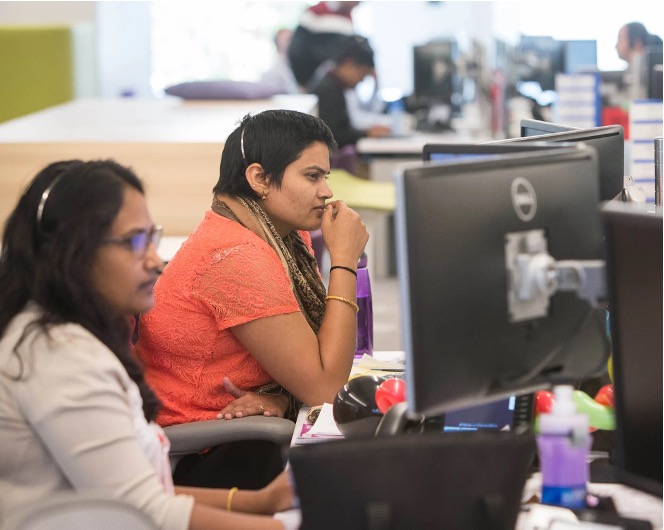|
|
|
|
The weekly newsletter of the Mexico Solidarity Project |
|
Every issue archived online at mexicosolidarityproject.org |
|
|
|
May 29, 2024/ Meizhu Lui, for the editorial team |
|
|
|
Migration: What’s Your Own Story? |
|
|
Cartoon for The New Yorker by J.B. Handelsman |
|
You live in the US. You’re a US citizen. But unless you’re Native American, you have a migration story. The first person in your family to move to the US came from what part of the world? Why? What was going on in their home country? How were they received?
The US is a settler state, peopled by migrants from all over the world. The very first group to settle — the Puritans celebrated in our school history books — traveled across the ocean from England seeking religious freedom. Today’s migrants are similarly freedom seekers, willing to endure extreme hardship to find a place their families can live without persecution, violence, or extreme poverty. Why is one group revered, the other demonized?
If we examined each one of our millions of migration stories, we’d find variations on a simple theme: our ancient human willingness to uproot ourselves to improve our conditions of life and, quite often, to save our lives. But today, we have deliberately shed a sense of shared identity with new immigrants, refusing them the welcome we wish our own parents and grandparents had received. Can we find it in our hearts to act in solidarity with people on the move today? Can we revive the tradition of welcoming new neighbors? John Washington, in our interview today, believes that we can. And that we must, in order to preserve our own humanity. |
|
For a deeper dive into current news and analysis in English, check out our media website. And definitely see the new English podcast ¡Soberanía! (Sovereignty) with José Luis Granados Ceja and Kurt Hackbarth. They entertain, while dismantling the lies and distortions about Mexico fed to us by the mainstream media. |
|
Don’t miss an issue! Sign up for a free Mexico Solidarity Bulletin subscription. |
|
|
Getting to “Yes” to Migrants |
|
At Arizona Luminaria in Tucson, AZ, a community-focused media outlet, John Washington writes about the border, climate change, democracy, and more. His articles have been published in The New York Review of Books, The Atlantic, The Washington Post, The Nation, The Intercept and other outlets. He’s the author of The Dispossessed: A Story of Asylum at the US-Mexico Border and Beyond. A prolific translator, he co-translated with Daniela Ugaz Blood Barrios by Alberto Arce, which won a PEN Translates Award. Find him on Twitter (X) or Substack. Most recently, his article “11 Arguments for Open Borders” appeared in The Nation. |
|
|
Lots of issues in the US concern us — the lack of affordable housing, mounting “natural” disasters, and so on. But migration is the all-consuming issue of this election, even though it affects very few. Why?
Creating fear of migrants is a winning campaign strategy. It worked well for Trump in 2016. The same drumbeat is sounding during this election season, and Biden has chosen to join it, not fight it. “Let’s see who can look tougher!” The fear-stoking employs false assertions that the data easily refutes — for example, that immigrants are a drain on the US economy — but then, this is not about facts.
It’s a propaganda war, and language is the weapon. They say migrants are “invading” the US, conjuring images of bandits taking over our country by force. But go to the border, as I did recently, where I talked with a typical migrant — a Guatemalan mom with three small kids, who was nervous, exhausted and grateful to hear the kind voice of the humanitarian aid worker who greeted her. Invaders?!
But that’s not to say immigration has a zero effect on US citizens. For example, in New York City, initially sympathetic mayor Eric Adams says that costs from the surge of migrants will force him to cut city services.
Local jurisdictions are hamstrung by federal laws that make it exceedingly difficult for migrants to work. Yet the US needs workers. At this point, the birth rate has fallen below replacement levels, which means the proportion of elders is growing in relation to working-age people. The US needs migrant workers to stave off the crisis. It’s simple: let them come, let them work! |
|
Government officials are spending so much public money stupidly. The Texas governor Greg Abbott, to make a political point, put migrants on buses and sent them to blue states where they knew no one. What a waste! They could have been sent to the homes of relatives who would welcome them. But it did create the desired political result — pressure on Democratic leaders like Adams, who had to expend city dollars on housing them in shelters and hotels. |
|
|
Hundreds of migrants forced to sit in a queue outside the Roosevelt Hotel in New York City, July 31, 2023. [AP Photo/ John Minchillo] |
|
"Let them work." That’s the intention of expanding the H2A program, which grants temporary legal status to farm workers. In 2022 we also saw a change for scientists wanting to work in the US, but the 0-1A temporary work permit (for “Individuals with Extraordinary Ability or Achievement”) can be extended indefinitely — and open a pathway to a green card!
Temporary farm labor programs that tie a worker to a single employer without the right to change jobs is hardly the solution; it’s a recipe for exploitation and abuse. |
|
|
Foreign workers close Delaware high tech jobs gap/ Delaware Online |
|
At the non-working class end of the job market, the Biden administration determined we need highly skilled STEM (science, tech, engineering, math) workers. Many foreign professionals stay in the US for awhile and then go home, and the mutual exchange of knowledge benefits both countries. And those who choose to stay in the US permanently help keep the US competitive in those fields. |
|
We could apply the same logic to the lower end of the wage scale. The government also recognizes the need for agricultural workers. Poor migrants often don’t want to stay long term; many spend a few years in the US, earn some money, and then go home. If they gain new skills and experiences from working abroad, they can, like high-income foreign workers, bring those home to the benefit of both countries. And, if they are allowed to stay, study after study shows that by the second generation, any cost of programs helping low-income migrants have been totally recouped.
You’ve made the case for open borders. What’s the difference between “open borders” and “no borders”?
Open borders are what we have now between states in this country. People have freedom of movement, but you must register in your new state, get a new driver's license, register to vote, pay different kinds and rates of taxes. You might have a waiting period in order to receive some benefits, such as voting or welfare. Those, I think, can be reasonable.
Free trade agreements allow the free flow of capital and goods across borders. In future agreements, labor should be allowed the same freedom of movement. When we allow disparity in the rights of workers versus the rights of capital, allow different laws for the rich than for the poor, for citizens and non-citizens, the system fits the definition of apartheid. It’s morally bankrupt.
What about Mexico and its role?
Mexico, a transit country, has long done the US’s bidding. AMLO, too, has been disappointing on this issue, and Mexico’s own refugee system is underfunded. It’s become more dangerous for migrants to cross Mexico; they risk extortion, kidnapping and rape. Migration is by definition a cross-border issue; unfortunately, neither the US nor Mexico has treated migrants in a humane manner.
You mentioned how fear is used as a basis for policy. Fear of being separated from children to deter migrants, fear of migrant “criminals” to drive border policy. What positive emotion could replace fear? |
|
|
2 US-born workers at a tech startup founded by an immigrant in Ohio. Benjamin Lowy/Getty |
|
The opposite of fear is solidarity. Receiving “others” into the fold is an ethical principle present in most religions. And it’s possible. For example, New York City has 170,000 recent migrants. That number sounds big, but it’s small compared to the total population of 8.8 million. They could easily be absorbed. Many previous waves of immigrants have become part of the fabric of our cities, enriching our culture, filling gaps in our workforce and inventing new kinds of businesses. |
|
And some places do welcome migrants. Some states have allowed non-citizens to receive Medicaid benefits with no questions asked about status, and some allow them to qualify for other low-income benefit programs. Some cities allow non-citizens who are long-term residents to vote in local elections. Rather than spending money on enforcement and policing, money can be shifted to investing in programs that give immigrants a stable and secure life. That’s what a democratic society should be doing.
What do we do now? |
|
The definition of asylum hasn’t been updated since right after WWII. For example, it doesn’t recognize the need to migrate due to climate change, though that’s now a common reason. It’s urgent that climate refugees be included in how we define asylum. |
|
|
Boston’s “Families Belong Together” rally on June 30. (Brian Snyder/Reuters) |
|
The way we talk about migration and the way we legislate it have real effects on real people. For awhile, the battle cry of “Abolish ICE” resonated broadly, but then the pressure dropped off. Those of us who care about human dignity can’t slack; we must keep pushing hard. |
|
|
|
|
Working Class Brugada to Head Mexico City |
|
Dana Corres Olguín is a Communications Specialist at the Autonomous University of Hidalgo. Recently, she was the coordinator of communication strategies for Greenpeace Mexico. As a consultant on feminism, public health, and other social issues, she co-authored methods for evaluating projects designed for public spaces, which have been used by SEDATU (Secretariat of Agrarian, Land, and Urban Development). |
|
|
It’s not feminist to compare women to put them at odds with each other. So, I don’t intend to compare two great leaders of the popular Obradorist movements, Claudia Sheinbaum and Clara Brugada, but rather I note that all kinds of women occupy key decision-making positions in Mexico today.
Many women activists start out with local problems. In their neighborhoods, they strive to create decent places for their sons and daughters and for those they care for (the ill, elders and people with disabilities). It’s wonderful that in Mexico City today, you can walk on a street and discover fruit trees planted by the women who live on that street.
Clara Brugada also began in this way. As a university student at the Metropolitan Autonomous University (UNAM), she was invited to teach high school in Iztapalapa. She chose to move to San Miguel Teotongo with its inadequate running water and electricity. Residents there were fighting for the right to housing, considered a basic right since the First World Habitat Conference in 1976. Clara joined them and has dedicated the last 40 years to that fight.
She co-founded several neighborhood organizations, including the Popular Urban Movement and the Emiliano Zapata Popular Revolutionary Union. She understood that a more effective way to achieve reform was to join a left party; in 1995 she joined the PRD (Partido de la Revolución Democrática). She was elected their Federal Representative twice, elected local representative to the Congress of Mexico City, and as a Delegate of Iztapalapa. The PRD’s disintegration taught her that it was necessary to continue organizing, but alongside the workers movement. She’s now in the Morena party.
Until recently, Clara Brugada was known only in Iztapalapa. As mayor of that borough, she created “Utopias,” safe and beautiful community centers with free art and music, sports facilities, programs for youth, and free services for women that empower them to end violence. But in 2023, when she ran against Omar García Harfuch (Mexico City’s former secretary of citizen security) for the position of Head of Government of Mexico City (similar to the Governor of a Mexican state), she became a public figure.
We feminists have applauded the Utopias for years because Clara's was the only vision to become a reality that embraced the significance of creating care facilities for the long-awaited national care system. Along with the hospitals, schools, rehabilitation centers, daycare centers, and public transportation (including safe paths along streets) that Claudia championed, the Utopias transform neglected neighborhoods into dignified spaces. Clara’s government finally acted as a caring entity, no longer leaving care work only to unpaid women.
Brugada promises to create 100 Utopias throughout Mexico City when she’s elected. The years 2024-2030 will be exciting because women, Claudia Sheinbaum and Clara Brugada, will occupy two vitally important government offices.
As the Los Angeles Azules — a famous cumbia band from Iztapalapa — say, “from Iztapalapa to the world!" |
|
|
|
|
Recent news reports and commentaries, from progressive and mainstream media, |
|
'Heart Of The Left': Ruling Party Fights To Keep Mexico City The Latin TImes. In Iztapalapa, a dozen large community centers known as "utopias" offer residents chances to exercise, receive medical care, take classes and use childcare. (Morena candidate fo head of government) Clara Brugada proposes to replicate the model across Mexico City.
Mónica Cerbón y Kennia Velázquez, Relaciones peligrosas POPLab. En México, las industrias de los alimentos ultraprocesados financian y participan de decisiones en investigaciones académicas, arropadas por una normatividad laxa. Las universidades públicas consultadas además de no transparentar por completo sus contratos, adolecen de regulaciones suficientes para evitar el conflicto de interés.
Adriana Barrera and Cassandra Garrison, Mexico Front-Runner Sheinbaum Aims to Reform Water-Heavy Agriculture Sector Reuters. Claudia Sheinbaum's government would crack down on corporations who break concession limits or sell water instead of using it themselves.
Erika Rosete, Al menos 9 muertos y 121 heridos tras el colapso del escenario donde Máynez celebraba un mitin en Nuevo León El País. Una ráfaga de viento derribó el techo y una enorme pantalla en el acto de cierre de campaña de Lorenia Canavati en San Pedro Garza García, en el que participaba el candidato presidencial de Movimiento Ciudadano.
Claudia Sheinbaum Launches Alert for Possible Electoral Fraud PresiNews. Claudia Sheinbaum is warning about possible electoral fraud and urging massive participation in the June 2 elections, while Morena prepares to defend each vote with representatives in all polling stations in the country.
Adriana Urrea, Telmex con riesgo de huelga que pondría afectar las elecciones Amexi. "Somos el sistema nervioso central de este país. Somos clave en el proceso electoral", dice Hernández Juárez del Sindicato de Operadores Telefónicos de la República Mexicana (STRM).
Mike Corder, Top UN court declines to issue preliminary orders in Mexico-Ecuador dispute over Quito embassy raid Associated Press. The case will likely take years to resolve. In the meantime, Mexico had asked the court to order Ecuador to take “appropriate and immediate steps to provide full protection and security of diplomatic premises” and prevent any further intrusions.
Pedro Villa y Caña, AMLO anuncia reunión con gobernadores para revisar avances del IMSS Bienestar El Universal. A menos de cinco meses para que termine su gobierno, el presidente Andrés Manuel López Obrador informó que mañana por la tarde se reunirá con gobernadores para revisar el avance del plan IMSS-Bienestar, y se comprometió que, en septiembre, México tendrá el mejor sistema de salud pública del mundo.
Rick Barrett, Manufacturers looking for low costs, easy access to U.S. market, turn to Mexico, not China Milwaukee Journal Sentinel. With the People’s Republic of China progressing away from low-cost manufacturing to an upper middle income economy, “there are now more than 1,300 Chinese manufacturers in the country, and China is the fastest-growing source of foreign investment.”
Juan Becerra Acosta, La mareada rosa La Jornada. La 'MareaRosa' tomó los colores del INE para defender un supuesto ataque a la autonomía del instituto encargado de velar y procurar la democracia en México, excusa tan falsa como efectiva para congregar, bajo pretexto de un ataque que no se dio, a mexicanos que, en todo su derecho, son opositores al gobierno de la Cuarta Transformación, pero que no hubiesen acudido a una movilización convocada por el rancio priísmo, el agónico perredismo, y el tan alejado de los preceptos de Gómez Morín panismo. |
|
|
|
|
The Mexico Solidarity Project brings together activists from various socialist and left organizations and individuals committed to worker and global justice. We see the 2018 election of Andrés Manuel López Obrador as president of Mexico as a watershed moment. AMLO and his progressive Morena party aim to end generations of corruption, impoverishment, and subservience to US interests. Our Project supports not just Morena, but all Mexicans struggling for basic rights, and opposes US efforts to undermine organizing and Mexico’s national sovereignty.
Editorial committee: Meizhu Lui, Bruce Hobson, Agatha Hinman, Victoria Hamlin, Courtney Childs, Susan Weiss. To give feedback or get involved yourself, please email us! |
|
Subscribe! Get the Mexico Solidarity Bulletin in your email box every week. |
|
Web page and application support for the Mexico Solidarity Project from NOVA Web Development, a democratically run, worker-owned and operated cooperative focused on developing free software tools for progressive organizations. |











